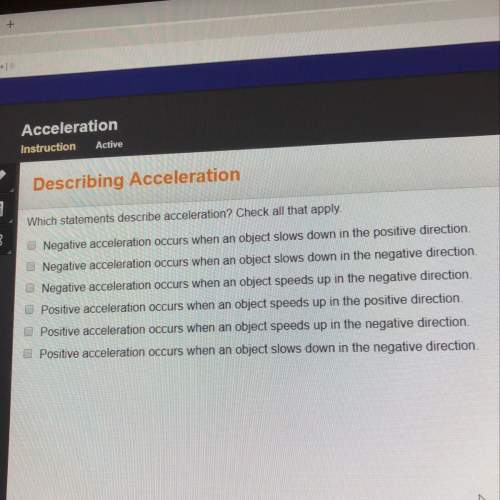
Physics, 27.03.2020 00:28 nikkierubio2007
Two spheres, A and B, with masses mA = 1.35 kg and mB = 2.96 kg, respectively, collide with v−A = 26.2 m/s and v−B = 22.5 m/s. Compute the postimpact velocities of A and B if α = 45°, β = 16°, the COR is e = 0.57, and the contact between A and B is frictionless.

Answers: 2


Another question on Physics

Physics, 22.06.2019 05:50
Astudent wears sunglasses to her read a book more easily which wave interaction occurs as light passes from the air into the plastic lenses? a polarization b.refraction c.diffraction d. interference
Answers: 1

Physics, 22.06.2019 10:40
As you are trying to move a heavy box of mass m, you realize that it is too heavy for you to lift by yourself. there is no one around to , so you attach an ideal pulley to the box and a massless rope to the ceiling, which you wrap around the pulley. you pull up on the rope to lift the box. use g for the magnitude of the acceleration due to gravity and neglect friction forces. once you have pulled hard enough to start the box moving upward, what is the magnitude f of the upward force you must apply to the rope to start raising the box with constant velocity? express the magnitude of the force in terms of m, the mass of the box.
Answers: 1

Physics, 22.06.2019 16:00
Marvin records scientific data about lake superior. for which property has marvin forgotten to use an si unit of measurement? shore length high temperature low temperature annual precipitation
Answers: 3

Physics, 23.06.2019 15:30
The following statements are about the electroscope. select all that are true. if an electroscope were given a positive charge beforehand, the leaves would move closer together if a positively charged object were brought near. when a properly prepared electroscope is used to determine the type of charge on an object, the total charge on the electroscope changes when the charged object is brought near (but not touching) the electroscope. depending on how the electroscope is prepared beforehand, the leaves can either move together or move apart when negative charge is brought near. an electroscope must first be given a known type of charge before it can be used to identify the types of charges on objects brought near it. when properly prepared, the leaves on an electroscope will always move further apart when negative charge is brought near. the leaves of an electroscope will move apart if it is given either a positive or a negative charge.
Answers: 2
You know the right answer?
Two spheres, A and B, with masses mA = 1.35 kg and mB = 2.96 kg, respectively, collide with v−A = 26...
Questions


History, 17.07.2019 14:30


History, 17.07.2019 14:30

Social Studies, 17.07.2019 14:30

History, 17.07.2019 14:30

Mathematics, 17.07.2019 14:30


Social Studies, 17.07.2019 14:30


Business, 17.07.2019 14:30

Mathematics, 17.07.2019 14:30

History, 17.07.2019 14:30

History, 17.07.2019 14:30

Social Studies, 17.07.2019 14:30


History, 17.07.2019 14:30

Biology, 17.07.2019 14:30

History, 17.07.2019 14:30

Social Studies, 17.07.2019 14:30




